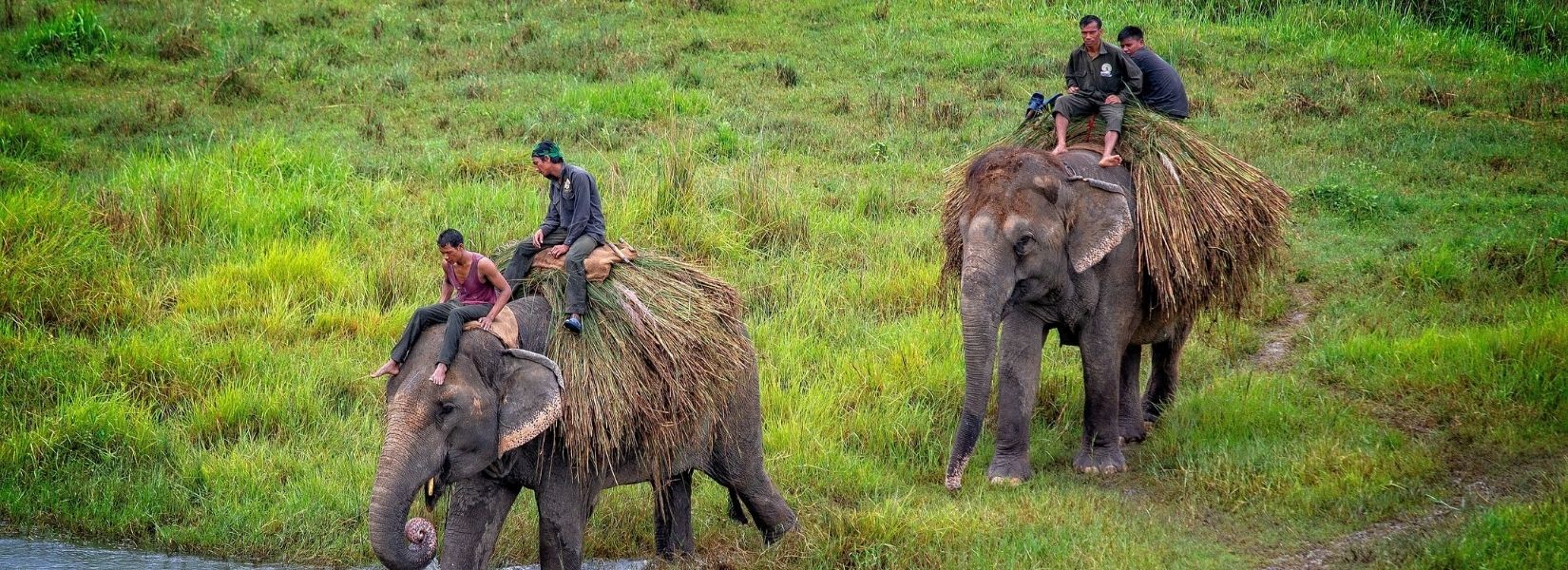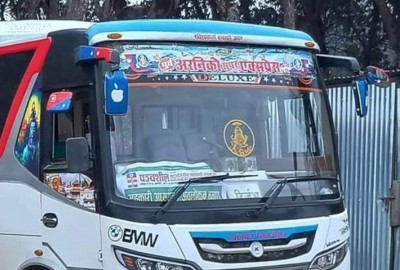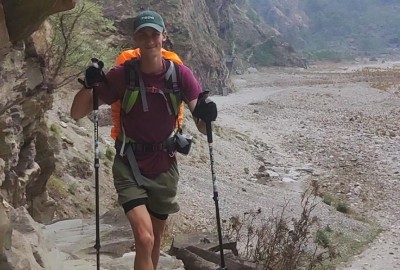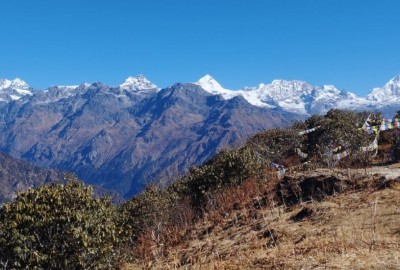Chitwan National Park has an abundance of flora and fauna and is one of the last refuges of the Bengal Tiger, Gharial Crocodile and home to one of the last populations of the single-horned Asiatic rhinoceros. Chitwan National Park is situated at the foot of the Himalayas and was established in 1973. It is located in Southern Central Terai and was Nepal's first National Park. The property extends over four districts: Chitwan, Parsa Makwanpur and Nawalparasi and covers an area of 93,200 hectares.
Table of Contents
Plan your trip to Nepal
Customize your trip with help from a local travel specialist.
This park is nestled in between two east-west river valleys of the outer Himalayas at the base of the Siwalik range and is the last existing example of the Terai region's enchanting natural ecosystem. The main area lies between the Rapti and Narayani rivers to the north and Reu River and Nepal-India international border in the south.
It is west of Narayani, from the Dawney hills and over the Churia and Sumeswar hills. It borders on the east with Parsa Wildlife Reserve. Spanning an area of 75,000 hectares which consisted of private lands and forests that surrounded the park was declared as a buffer zone in 1996. Under the Ramsar Convention in 2003, Beeshazar and affiliated lakes which fell within the buffer zone were declared as a wetland with utmost international importance.
With lush covered vegetation and the Himalayas acting as a scenic backdrop, the landscape makes the park an outstanding natural beauty. The ever-changing rivers and hills covered in a forest make Chitwan, one of the most dazzling parts of Nepal's lowlands. There are two famous religious areas in the region: Bikram Baba at Kasara and Balmiki Ashram in Tribeni. These places are popular pilgrimage sites for Hindus from Nepal and India. Also, this area is the land of the indigenous Tharu community who are known for their unique culture and are said to have lived in the geographic region for centuries.
The combination of a forest with rivers along the coast and alluvial floodplains makes this an exemplary habitat for the Great One-horned Rhinoceros, Gharial Crocodile, and the Bengal Tiger and provides a feasible source population for the endangered species. The park has extremely high species diversity. It consists of 61% of birds, 65% of fishes, 31% of mammals and 34% of amphibians and reptiles recorded in Nepal. There are a total of 544 species of birds, 126 species of fish, 68 species of mammals and 56 species of herpetofauna. The park falls amongst WWF's 200 Global Ecoregions and is popular for having one of the highest concentrations of birds in the world. Conservation International designates it as one of the worlds' biodiversity hotspots.
The park's world heritage values have been enhanced as the population of both the Bengal Tiger and Great One-horned Rhinoceros has increased. In the 1980s, the population of the Rhinoceros was around 300 and in 2011 the population was 503. The population of breeding Tigers was 40 in the 1980s and in 2010 it had reached 125.
History of Chitwan National Park
Since 1800s, Chitwan National Park has a long history of protection. The National Parks and Wildlife Conservation Act, 1973 has been legally protecting the park. Since 1975, the Nepalese Army has been deployed for park protection. The Buffer Zone Management Regulation, 1996 and Chitwan National Park Regulation, 1974 has ensured the protection of the park.
The Government of Nepal has recognized the significance of the park and has invested the required resources for its management. The Management Plan has been managing the activities and is regularly updated and revised to ensure the best way of protection. In 1974, the first five-year Management Plan (1975-1979) was prepared and it was updated in 2001-2005 to include Chitwan National Park and its buffer zone. A succeeding 2006-2011 plan covers the Park and Buffer Zone. It streamlines the management and conservation of the property. The conservation and maintenance of the park will be ensured through a protection strategy with enhancement along the way.
Things To Do in Chitwan National Park
There is an entrance fee for Chitwan National Park.
Jungle Walks
You have the option to choose between, full or half-day tours or you can do two/three days or a week. You can even do private jungle treks. You have the choice to either go alone or in a group. For four people, the prices usually start around Rs 1400 for a half-day trek and Rs 1800 for a full day jungle trek. There are usually accommodations for overnight trips.
If you choose the half-day trip, you'll probably end up seeing only the jungle, Rhesus monkeys and a few birds. If you're lucky you might see a Rhino. A full day trip usually entails a greater chance of seeing a Rhino, birds and other wildlife. As overnight trek takes you deeper into the jungle, your chances of seeing Rhino increase and you might even end up seeing a tiger.
Jeep Safari
This trip is offered to those who want to go deep into the jungle quicker without the hassle of walking. These tours are often mixed in packages and day excursions. The prices usually start around USD $180 per day and it includes food as well as accommodation. The online prices can be quite expensive than what is offered in person, so it is better to book in person.
Elephant Ride
These treks generally last 1 to 1.5 hours and are usually offered by lodges and tour agencies. Elephant Jungle Treks usually have three times: early mornings, mid-morning and late afternoon. It costs anywhere between Rs 1800 to Rs 2500+. These tours are usually run by people who own elephants or rent them.
Cost for Elephant Safari
The government-owned elephant tour used to cost Rs 2500 but it has become very hard to arrange since 2016. This tour is done on a different location than the regular one and additional fees are used to fund the National park and local communities. The elephants are taken out twice a day. Elephants are easier to find at the NTNC office but most of them are now being used by rangers for park patrols.
The fees vary according to nationality. If you're a Nepali, the fee is Rs 200. SAARC countries pay Rs 1000 while foreigners pay Rs 2500. Park entrance costs are not included in the tour fees but it is possible to buy a Chitwan Park ticket after 2 pm and then go on an afternoon elephant jungle ride and use the same ticket tomorrow for a full day of trekking. This way is the best method to see rhinos in Chitwan. Early morning and late afternoon are the best times to take rides as there are more chances of seeing wild animals.
Elephant Breeding Center
The elephant breeding center is located in Sauraha, Chitwan and it was made to protect the endangered elephants living in the region. You can often see baby elephants roaming around. There is also a little museum there. It will take at least an hour to walk there from Sauraha but you can also take a rickshaw or other methods of transportation. The entrance fee is Rs 10 for Nepali, 25 for SAARC countries and Rs 50/60 for foreigners. The center is open from 6 am to 6 pm but it usually starts closing up at 5 pm.
River Boating and Canoeing in the Chitwan
As you will be surrounded by crocodiles, it is better to keep your arms and legs inside the canoe at all times. There are many agencies that either rent out canoes or offer half-day canoe rides in the Rapti river. 1-2 hours of canoeing and a half-day trek back through the jungle is usually offered in package tours. The costs are Rs 1400 for half-day and Rs 1800 for a full day. The main highlight of the boating is the crocodiles that can be seen basking on the river banks. You can also see a variety of birds along the shore of the river.
How to Get to Chitwan National Park
Tourist buses leave early in the morning from both Kathmandu and Pokhara. You can also find daily buses and micro-buses from Kathmandu and Pokhara that go all the way to Sauraha and vice versa. The journey takes 5-6 hours but it depends on the traffic. Private cars and jeeps can be arranged for transport but it is not very budget-friendly.
Contact us, if you need any help or information regarding Chitwan National Park. We will answer your queries immediately.








